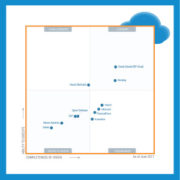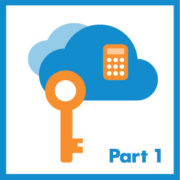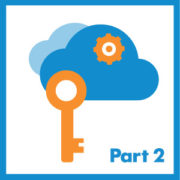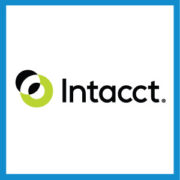Gartner Releases New Magic Quadrant for Cloud Financial Management
Some shockers, some expected results, and some huge news in the latest Magic Quadrant from the global analyst firm Gartner. In recent weeks, Gartner released a new Magic Quadrant (MQ)—Cloud Core Financial Management Suites for Midsize, Large and Global Enterprises—to help businesses understand the evolving and expanding market that is Cloud ERP.
First Ever Gartner Magic Quadrant for Cloud Core Financial Management Applications
Up until recently, Gartner avoided building a Magic Quadrant for core cloud finance, due in part to the buying cycle that goes with core financial management applications. Many customers were not looking for an ERP upgrade in recent years, and the immense global players weren’t yet ready to move to the cloud. Now, however, there is a market shift to cloud applications, and CIOs, CFOs, and boards are finding that the cloud offers the security, uptime, and flexibility that they need.
What is Gartner’s Magic Quadrant?
Gartner’s Magic Quadrant reports are a culmination of research in a specific market, giving companies a wide-angle view of the relative positions of the market’s competitors. The reports help prospective buyers quickly ascertain how well technology providers are executing their stated visions and how well they are performing against Gartner’s market view.
Gartner does not endorse any vendor, product or service depicted in its research publications, and does not advise technology users to select only those vendors with the highest ratings or other designation.
The Evolving Cloud ERP Market
Gartner saw this, noting that there is a shift from static to dynamic, and there is soon to be $31B in play for cloud financial management and “postmodern ERP.”
“The market for core financial management suites has been static for many years. However, over the last 12 to 18 months, cloud core financial management suites have matured to such an extent that they have disrupted this static market. This reflects the increasing prevalence of postmodern ERP strategies (see “Schrödinger’s Cat: How ERP Is Both Dead and Alive”). Postmodern ERP is the deconstruction of suite-centric, monolithic, on-premises ERP deployments into loosely coupled applications, some of which can be domain suites (such as core financials or HCM) or smaller footprint applications that are integrated as needed.”
How Gartner Compared Core Cloud Financial Management Applications
For this Magic Quadrant, Gartner defines core financial management suites as follows:
- The core functional areas of general ledger (GL), accounts payable (AP), accounts receivable (AR), fixed assets (FA), project accounting, project costing, and project billing.
- Financial analytics and reporting, including provision of financial information (such as P&L and balance sheet) and the ability to provide financial information such as KPIs to managers and executives.
- Basic indirect purchasing functionality (from creating a requisition through to purchase order processing and AP invoice matching and payment), because many organizations — especially midsize organizations — need some basic procurement functionality as part of a core financial applications deployment.
Visual: Magic Quadrant for Cloud Core Financial Management Suites

The Results Are In: Upsets, Expectations, and Big News
First? The shockers: Some of the largest and well-known players (SAP, Epicor, Deltek) found themselves in the “niche players” category—something that surprised Enterprise Irregulars contributor Vinnie Mirchandani, who said “I honestly cannot remember the last time SAP showed in the lower left quadrant – for niche players – in a Gartner MQ”.
The Expected Results? Global Player Oracle showed up highly on the list for its Oracle ERP Cloud—a solution built to meet the needs of the largest enterprises in the world. This comes as no surprise, as the company displays immense market presence and had begun to make moves to the cloud earlier than many other global software players.
The Big News: Intacct Named a Visionary
The big news? Intacct was named a visionary, receiving high marks both for its completeness of vision and its ability to execute receiving the third and fourth highest marks, respectively.
Intacct’s Completeness of Vision Blows Away the ‘Old Guard’ of Vendors
Completeness of vision, the more qualitative of the measures, is based on eight components: Market Understanding, Marketing Strategy, Sales Strategy, Product Strategy, Business Model, Vertical/Industry Strategy, Innovation, and Geographic Strategy.
This is a notable victory, but is one that plays into Intacct’s strengths and internal focuses. Intacct has a well-defined mission and business model, and has been known for its success within its market.
Ability to Execute Only Surpassed by Two Giants
While Intacct’s completeness of vision was impressive if not expected, the company’s position on ability to execute is notable, as it exceeded industry giants like SAP, Epicor, Deltek and Microsoft; companies whose operating budgets, global scale, and therefore visibility dwarf Intacct’s.
In fact, when the only companies exceeding the ‘ability to execute’ are two massive publicly traded companies:
- Oracle, with two options higher on the ‘ability to execute’ axis, does business on all seven continents (including Antarctica) and has a 209.97B market cap.
- Workday, who has approximately a 20.5B market cap.
Still, with only three vendors who exceed Intacct in ability to execute, Intacct’s notable focus and ability to meet the needs of customers demonstrates the company’s ability to compete and provide a powerful product to growing companies in the middle market, scaling with these customers as they grow.
Conclusion: The Right Size and the Right Focus for Your Midsized Organization
While many reports will focus on “ERP as a whole,” noting the largest platforms—both cloud and on-premises—this is one of the first reports that looks at applications ranging from midmarket to global, as well as looking at qualitative measures like vision.
One thing Gartner does focus on when talking about Intacct is that while it is able to handle the midmarket, it can also scale with organizations, noting that Intacct’s successes:
- Supporting individual clients that have up to 3,000 users, 600 entities, or 250,000 transactions per hour.
- Supporting local reporting in over 80 countries.
- Supporting companies like Guidewire, Marketo and GrubHub as they’ve grown revenues 5 – 10x and gone public.
This report is normally available only for Gartner clients, but for a limited time, those interested can get the report for free from Intacct’s website.











Interesting blog on Gartner magic quadrant cloud financial management, Please keep sharing.